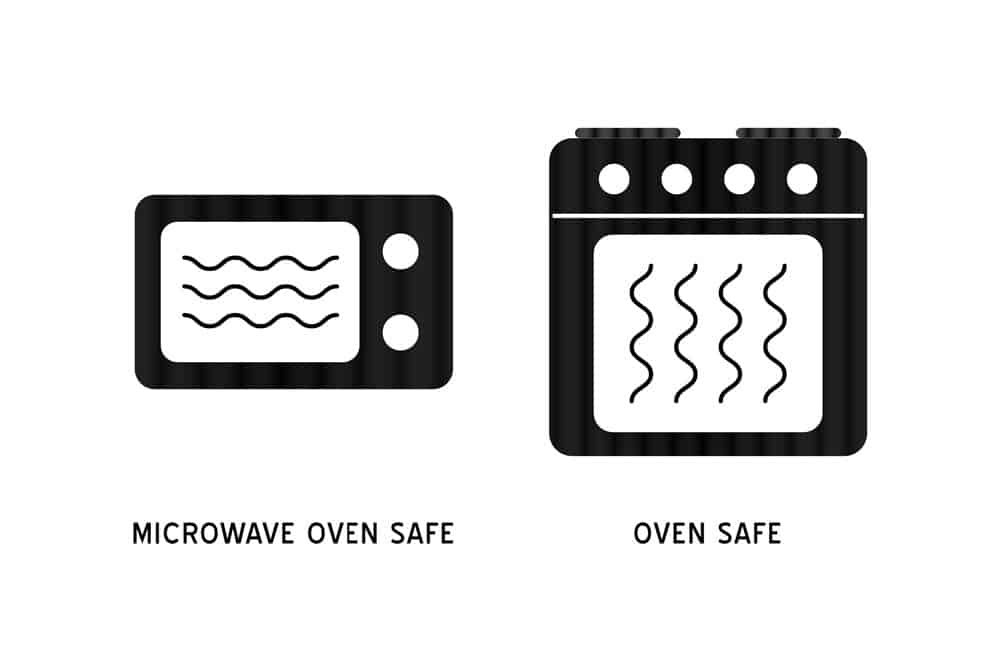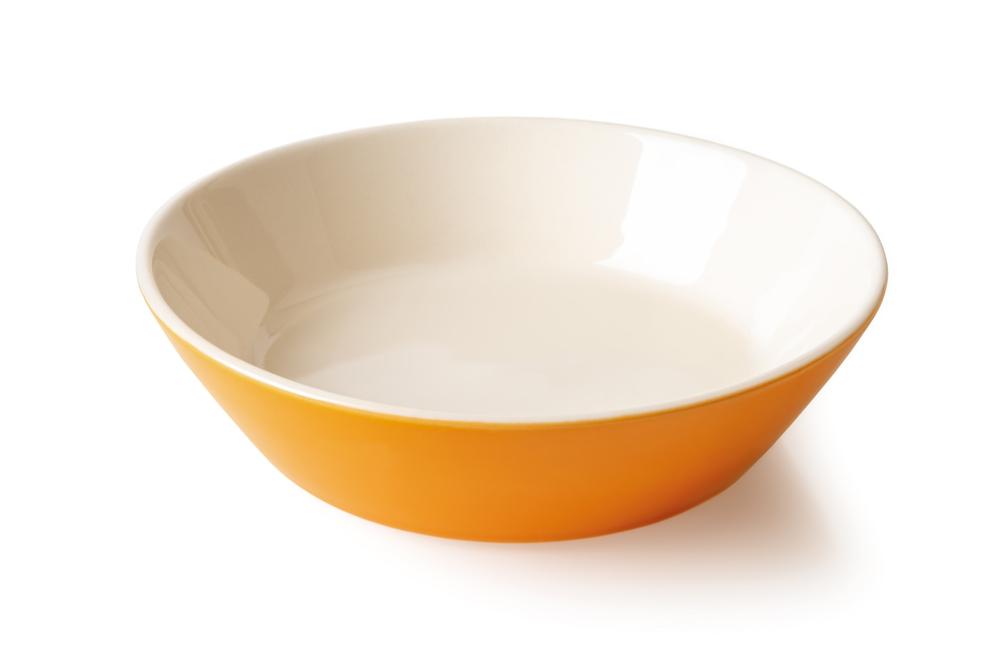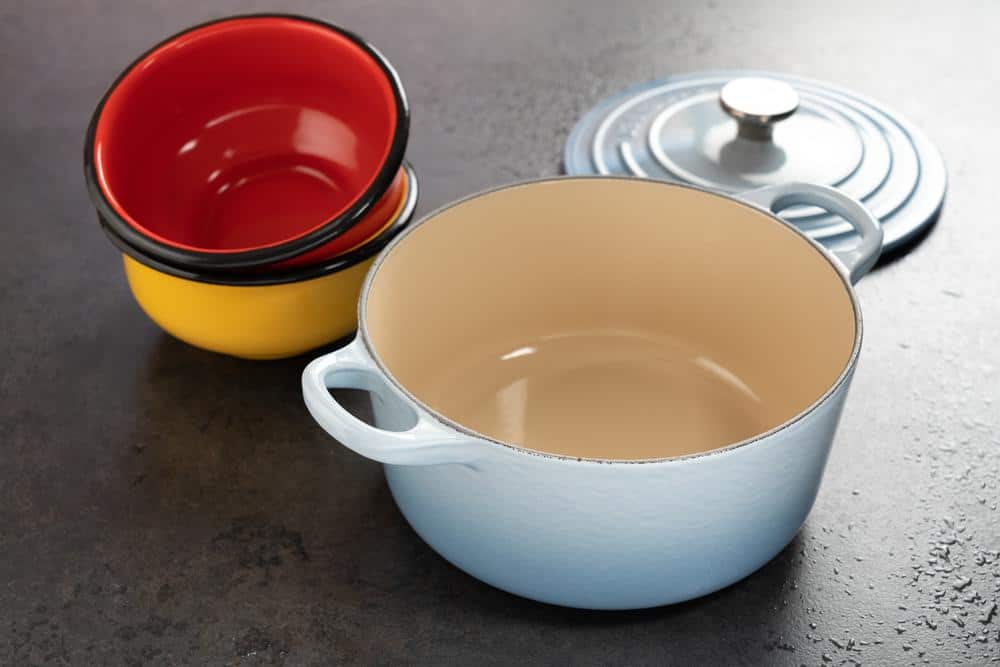So many of us invest in quality cookware as we grow into our kitchen skills. Investing in porcelain cookware is an exciting milestone achieved one piece at a time. Some of the most iconic cookware and bakeware available is porcelain, including the famous Le Creuset pieces.
However, it is critical to know how to care for each of these pieces to maintain their signature long lifespan. One essential question to fully understand is, “can porcelain go in the oven?” Understanding the nuance of this question will keep you safe in the kitchen.
In this article, we will provide a brief introduction to the substance of porcelain and describe the circumstances where porcelain should not go in the oven. Also included are porcelain care instructions and how to avoid thermal shock and extend the lifespan of your porcelain items.
Porcelain is a tough, naturally-occurring substance made from mineral-rich clay and pottery stone. This substance was discovered in China and introduced to Europe through the travels of Marco Polo in the 16th century.
For centuries, porcelain was prized and difficult to find. Only royalty and the very powerful enjoyed porcelain items. Famous figures throughout history are often immortalized with porcelain gifts, from former President Richard Nixon to Queen Elizabeth II.
A porcelain dinnerware set is a staple in many homes across the United States. Porcelain is used for several items, from expensive and luxurious bone china and priceless vases to most of our home toilets. This material’s remarkable durability and easy-clean surface make it very desirable.
Porcelain is also sometimes called “ceramic”, however, there is a slight difference. Ceramics are a broad category of any object made of clay and fired in a kiln in a high-temperature finishing process. Porcelain is a specific type of ceramic that is distinctly nonporous and transparent.
Some items are entirely made of porcelain. Think of a delicate tea set or set of elegant china dinnerware. However, many cookware items harness the durable and efficient powers of porcelain for an exterior enamel coating only.
High-end porcelain enamel cookware lasts for decades and boasts a seamless porcelain coating. Stainless steel, cast iron, or other durable metal material is covered with porcelain. The strong porcelain coating on these pieces is not vulnerable to rust, corrosion, fading, or peeling.
Typically, yes! Most porcelain bakeware or cookware will withstand the temperatures of a conventional oven just fine. Reach for a porcelain baking dish for a delicious potato grain or pop a porcelain casserole dish in the oven to feed a crowd.
When porcelain is made, it is fired in an ultra-hot kiln . This material is subjected to a 2,600 degree Fahrenheit kiln to produce this signature strong substance. Therefore, most functional pieces of porcelain will easily adapt to oven temperatures, which rarely exceed 500 degrees.
A porcelain dish is usually marked with an oven-safe or microwave-safe emblem on the bottom. Check your cookware or bakeware for these symbols to give you extra peace of mind. Oven-safe porcelain is very commonplace and relatively simple to find for a variety of budgets.

Icons indicating whether or not cookware is oven safe (and microwave oven safe)
These pictures show a microwave, or box with horizontal wavy lines. Oven-safe pieces will have the symbol of a box with vertical wavy lines, to depict an oven. If your porcelain cookware was manufactured before the 1970s there is a good chance it does not have these helpful markings.
If you roll the dice on a piece of porcelain and it cannot endure the oven, it will break into large pieces. Unlike glass or other materials, porcelain rarely shatters. In Japan, porcelain owners have turned the practice of repairing these large cracks into functional art called kintsugi .
Because of its resilient nature, porcelain is used for many different things, especially in the kitchen. Porcelain is a lightweight material that conducts heat efficiently and evenly. An ultra-durable material, porcelain cookware, and bakeware can still be used after enduring a chip.
In today’s kitchen, porcelain cookware is now very commonplace. The cheerful, brightly-colored kitchen sets dominating store aisles are frequently porcelain-enamel pots and pans. This means porcelain is deployed to provide a durable coating to the outside of metal or cast iron items.
Porcelain cookware lends itself to so many different kinds of preparations. Sear a plank of fish or juicy steak in a porcelain enamel saute pan on the stovetop then effortlessly transition into the oven. Simmer a creamy sauce with the even temperatures achieved with a porcelain saucepot.
Pots and pans with a porcelain enamel surface are also delightfully nonstick. This coating is superior to Teflon or other nonstick surface competitors and reduces your reliance on oil, butter, or cooking spray.
Take your next meal outside and bring your porcelain cookware with you! Porcelain is a great choice for camping or grilling adventures because of its rustic appeal and ability to roll with punches. Porcelain is easy to clean, so dishes never keep you from the party for too long.
In addition to working terrifically for a campfire meal or an oven preparation, porcelain ceramic cookware can also be used in a toaster oven, or stovetop, and is even microwave safe.
While many varieties of porcelain can effortlessly transition from stovetop to oven, some porcelain products should never go into the oven. The easiest way to decide if your porcelain should go in the oven is to consider its final purpose.
Decorative pieces of porcelain, like ones brought back from tourist destinations, should not go in the oven. Any porcelain with decorative accents, like fragile knobs or delicate handles, is typically not oven-safe. The same goes for the porcelain bowl or porcelain plate with fancy metallic decoration.

Check with the manufacturer of your porcelain items or look for indicators of an item being oven safe on the bottom of the bowl
If your porcelain is secondhand, it is not recommended to put it in the oven unless you can clearly see the oven-safe symbols described above. Thrifted porcelain can have cracks or other defects or may be manufactured before 1970, making it suitable to place in the oven.
As a general rule of thumb, no porcelain dinnerware pieces should ever go into the oven. This includes a ceramic plate, ceramic bowl, or large serving dish. Warming up serving plates, soup bowls, or other porcelain serving pieces in the oven is not recommended.
To add to the list of wonderful things about porcelain, its effortless care instructions are definitely a plus. In fact, many pieces of porcelain enamel cookware like dutch ovens or egg pans can be placed directly into the dishwasher without any trouble.
Unlike cast iron, these pieces do not have fussy cleaning instructions if you decide to clean by hand. Feel free to use dishwashing soap and a sponge or cloth to clean. You will be pleasantly surprised by how easily any debris is cleared from a porcelain enamel object!
Interestingly, most of these care instructions focus on handling porcelain before, during, and after the active cooking process. Because of porcelain’s chemistry, it cannot survive a sudden temperature change. This is called thermal shock and will typically ruin your porcelain item.
Thermal shock can damage your porcelain both when exposed to high heat and sudden cold temperatures. To protect against high temperatures, place your porcelain in the oven while it preheats to prevent any shock from transitioning the bakeware into a hot, preheated oven.

If using porcelain cookware, avoid extreme temperature changes
Prevent thermal shock when going from hot to cold as well. If you set porcelain bakeware from the oven onto a cool countertop, you run the risk of a shattered piece of kitchenware. Instead, always use a hot pad under the cookware to protect it from the cold surface.
Another way to protect your porcelain against sudden temperature change and thermal shock is to let your delicious recipes cool in the oven for up to 20 minutes before you remove them.
Some recipes may not tolerate additional time sitting in a slowly cooling oven, so use with discretion.
Think twice before you submerge your porcelain and porcelain enamel kitchenware into a sink of water as well. If the piece is too warm or your dishwater is very hot, the porcelain may crack or otherwise become unusable.
Porcelain is “fired” in a kiln at much higher temperatures than stoneware. Stoneware dishes and plates aren't nearly as durable as porcelain.
Similar to porcelain, look for the wavy lines stamp (or mark) on your porcelain to make sure that it is oven proof. Stoneware can't withstand the extremely high temperature of a very hot oven. To be safe, make sure that you don't expose oven safe stoneware to temps above 450 degrees Fahrenheit.
Porcelain is a very durable and versatile product welcome in most of our kitchens. It is important to examine your specific pieces of porcelain carefully to determine if it is oven safe. Most porcelain enamel pieces can seamlessly transition into an oven.
All oven-safe porcelain pieces must take special care to avoid thermal shock, the greatest threat to porcelain kitchenware. It’s critical to avoid extremes in temperature when working with your porcelain to keep this lightweight, valuable kind of kitchen tool serving you for years to come.
